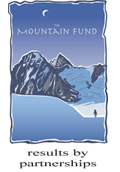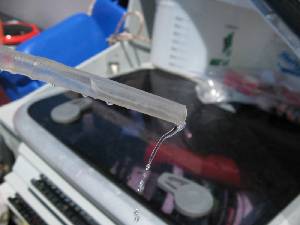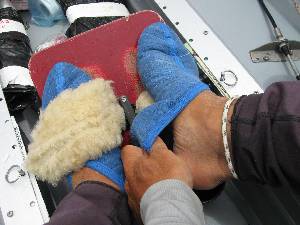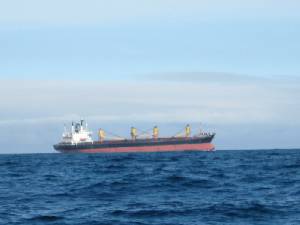|
What comforts me?
July 29, 2007 30.5846N,125.4162W
When I do not worry about the busy shipping lane I seem to be crossing (good for another dispatch), I find things that make life enjoyable and the crossing more pleasant. Identifying the small but unique details which matter, add color to the experience.
As a mountaineer, I always found great comfort in the purring sound of my stove on a cold climb. It meant that soon there would be snow melted for drinking, and water boiled for preparing food. A full tummy at the end of a long day, and the heat radiating from within after warm drinks is a reward in such harsh environments.
What comforts me on the ocean?
When I row after dark, I occasionally catch the blink of a red light on top of my ARGOS beacon. The blink tells me that someone at the CLS facilities near Toulouse, France just picked up my location data. When I turned off my beacon for a few days to save its battery while I was on stand-by at Bodega Bay, Ocean Rowing Society was notified by CLS of the signal disruption. When I turn on my "request assistance" switch on the beacon, I know that it will similarly be noticed by someone who already knows where I am.
My life depends on the availability of drinking water out here. Without potable water, I will not be able to reconstitute the freeze-dried meals that I have on board. The debilitating effects of thirst will be evident long before hunger can deplete me. I am surrounded by an ocean of water, but I may as well be in the middle of a desert. Collecting rain water will not be realistic until I reach the Inter-Tropical Convergence Zone (ITCZ) further southwest on my path.
I have on board 100 liters, or 25 gallons of fresh water in jugs, placed below my rowing station as ballast. These help balance the boat and enhance its self-righting behavior in case of a capsize. The same jugs are my emergency water rations, to be dispensed at 8 liters per three days, good for just over 30 days of survival. Including the additional 5 gallons that I keep accessible in the footwell, I will stretch the time I need before rain or a passing ship resupplies me.
In the early days of ocean rowing, electric watermakers and satellite phones were not available. Those pioneers took on the ocean bravely, with no guarantee of resupply, raising their stakes considerably. If they complained, you would not have heard it anyway.
I have solar panels on top of my cabin which trickle charge two marine batteries below my mattress. A 12-Volt system operates everything on board. If instruments are not hot wired, they are powered mostly by a cigarette lighter jack. I recharge my satellite phone, my mp3 music player, my handheld computer for this dispatch and my email, all using those standard jack. Camcorder and camera batteries require a small power converter to obtain 110V from the 12V jack.
The principal watermaker that I have on board is a hardwired Katadyn PUR40E. This is a reverse-osmosis machine requiring only 3 amps, producing 6-8 liters, or up to 2 gallons of fresh water per hour. I currently require 3-4 liters a day, which may increase in warmer latitudes. So far it has been mostly overcast and temperatures have been comfortable.
The gearing sounds of the PUR40E is music to my ears. What's better is the distinct clicking noise, the characteristic sound that its valves make when sufficient internal pressure builds inside the watermaker. When air gets inside the watermaker, I don't hear that click, and I worry.
My watermaker relies on vacuum to draw water from under the boat, to raise it, then to pass it through a prefilter. After all this routing, the sea water finally arrives at the pressure chamber. There it is pumped up to 800psi and water is pushed through a membrane, leaving more saline water on one side and delivering fresh water on the other in a steady drip.
For this to work, a vacuum is required, because air getting in the system compresses in the pressure chamber (water does not) and watermaker falters without pressure until I can bleed the air. So I have been trying to locate that small elusive leak in between productive sessions...
One great feature of the PUR40E is that if my electrical system failed, I can take it apart. I can use special lever to replace the motor assembly, and produce water by hand. This is time consuming and more punishing than rowing all day, yet without electricity, I would save time on dispatches ;-)
As spares, I have two additional watermakers on board. One is a Katadyn Survivor-06, a small personal unit which is tucked away in my grab bag. This survival bag would leave the boat with me in case I transitioned to my Winslow Standard Offshore liferaft for any reason. The Survivor-06 makes a trickle of water, and is good for someone who does not have anything better to do, like a person sitting around in a liferaft.
A better unit I have on board is the Katadyn Survivor 30, which can manually match the production rate of the PUR40E, and is essentially the same unit with lighter plastic construction delivered with the hand crank.
So I have ways to continue producing water before requesting a water resupply, which would sacrifice my claim to an "unassisted crossing."
Redundancy and alternate game plans require some advance planning, and where it all fails, creativity, improvization and survival skills help. Trusting that all will be fine is a comforting thought.
I am about 150nm south of San Diego, and 500nm west of Bahia San Quintin. I can kick back and write a long dispatch as the boat tracks nicely due SW in favorable conditions, exactly where I want to go. I am feeling pretty good about my chances to carry on toward the dateline. I worry unnecessarily about my approach path to Australia, the last third of this crossing; the ocean will inevitably tell me where to go eventually.
Erden.
|







 Fresh water, bringing life and comfort to the boat...
Fresh water, bringing life and comfort to the boat...


